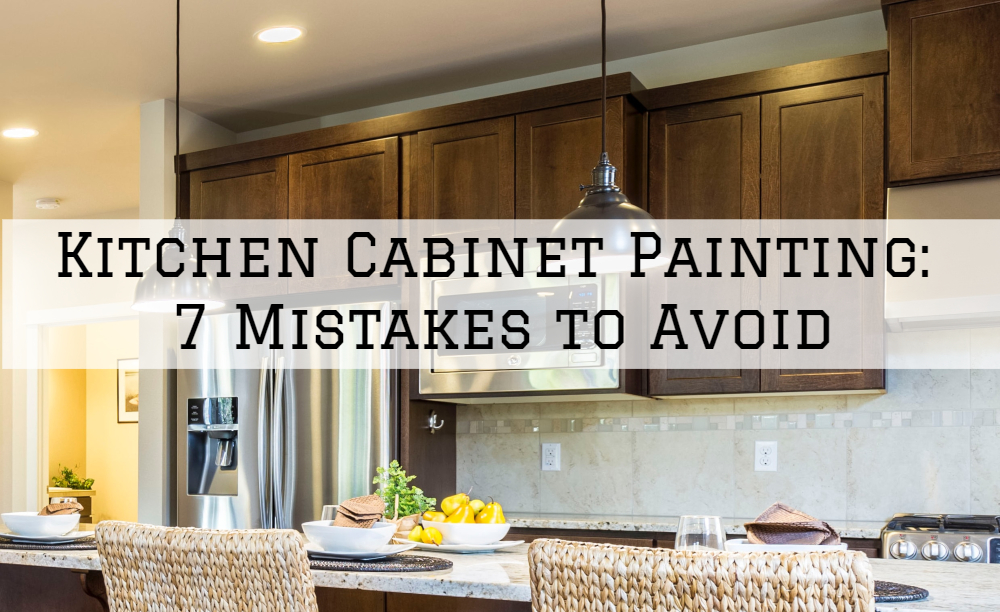Kitchen Cabinet Painting Omaha, NE: 7 Mistakes to Avoid
October 22nd, 2019 | 2 min read
By Bill Carlson

Do you want to
transform your kitchen? Are you planning to paint your kitchen cabinets in
Omaha, NE? Because they occupy a significant space in your kitchen, there looks
and condition can impact a lot on the overall aesthetic of your kitchen.
Painting kitchen
cabinets can add style and a fresh look in your kitchen, but the project can
quickly turn into a disaster if it is not well planned. In this article, we
want to share common mistakes to avoid in order to produce a flawless,
high-quality, and durable paint job.
Let’s dive into it!
- Leaving
Doors And Drawers In Place
Most DIY painters make
this mistake. The first step is to take down the doors and drawers. Do not try
to save time by leaving your cabinets and drawers in place. The painting stage
will be more difficult and probably incomplete because of the small unreachable
areas.
2. Forgetting To Label Cabinet Doors And Accessories
Before removing your
doors, set a number code for your doors and drawer. For example, go from left
to right, starting with the number 1 or the letter A. Write these numbers on
your doors, even on your boxes as needed. It will be easier to rebuild your
kitchen cabinets at the end of your project.
As you remove your
doors and drawers, clearly label the hardware. For example, cabinet number 1
with hinges and handles number 1. Use small Mason jars or plastic bags to store
the hardware and to be able to identify them.
3. Skipping The Sanding Step For Wooden Cabinets
To ensure that the new
paint adheres well and that the surface is smooth, you need to sand all the
surfaces to be painted. Use fine-grained sandpaper and sand all areas, even the
small moldings.
4. Cleaning The Surface Thoroughly
The cleaning stage is
essential for the success of your project. To ensure maximum paint adherence
and durability, clean the doors with a degreasing cleaner designed for wooden
cabinets. Painting over dirty surfaces often leads to premature paint
peeling.
5. Skipping The Primer
If your cabinets are
white, the primer may seem like an unnecessary step. However, the primer allows
your new paint color to stand out, in addition to concealing the filler. It
also promotes paint adherence for a flawless durable paint job. Don’t skip the
primer.
6. Choosing The Wrong Color
Choosing the wrong
color is probably not a very consequential mistake, but keep in mind that if
you make the wrong color choice, you will be stuck with that disappointment for
some years. Consider coordinating with the color to your kitchen backsplash and
accessories.
If you are uncertain
about the color to use, check with a color specialist at the paint store. Bring
a sample of your backsplash, an accessory, or even an inspirational picture.
You will be able to make an informed choice.
7. Refitting The Cabinets Too Quickly
It is crucial to
observe the drying time of the paint. Especially when it comes to cabinet doors
since they are handled frequently. Skipping this step could damage the fresh
paint and force you to start the project again!
The Bottom Line
Renovating kitchen
cabinets, like most types of renovations, takes time. The planning stage of a
kitchen cabinet painting project is as important as the painting itself. Do not
neglect this part; it is often guarantor of the success of the final
result.
I hope this article
helps you to avoid making common mistakes and successfully paint your cabinets.
However, if you need professional help with cabinet painting in Omaha, NE, our
team at Brush & Roll Painting can help. We have years of experience and a
long list of happy clients.
To get started with
us, book a FREE estimate below or call us on 402-932-9764 for more
details.
Bill is the owner and operator of Brush & Roll Painting.
Topics:
